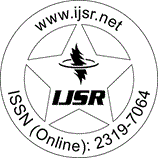Downloads: 7
India | Toxicology Science | Volume 13 Issue 2, February 2024 | Pages: 501 - 513
Heavy Metal Accumulation in Human Body: A Molecular Toxicity Leading to Cancer
Abstract: A wide range of heavy metals can be considered carcinogens, which are serious toxicants. Despite this, heavy metals are useful for industries such as alloy production, smelting, and production of commercial products due to their chemical and physiological properties. Such applications increase exposure to heavy metals. Waste generated at the time of industrial process is also a major source of environmental pollution and accumulation in the human body. Arsenic, cadmium, chromium and nickel are listed as Group 1 carcinogens by the International Agency for Research on Cancer and are used commercially. In this review, we use molecular pathway analysis to understand the mechanisms of toxicity and carcinogenesis of these metals. The data we analyzed suggests that the aforementioned metals induce oxidative stress, DNA damage and cell death processes that increase the risk of cancer and cancer-related diseases. Therefore, we can consider that phytochelatin molecules and antioxidant phytochemicals can be used to prevent heavy metal-induced cancers.
Keywords: Carcinogens, Accumulation, Cancer, DNA damage, Toxicant, Environmental pollution, Oxidative stress, antioxidant, Phytochelatin, Phytochemicals
How to Cite?: Rajrupa Ghosh, "Heavy Metal Accumulation in Human Body: A Molecular Toxicity Leading to Cancer", Volume 13 Issue 2, February 2024, International Journal of Science and Research (IJSR), Pages: 501-513, https://www.ijsr.net/getabstract.php?paperid=SR24202163057, DOI: https://dx.doi.org/10.21275/SR24202163057
